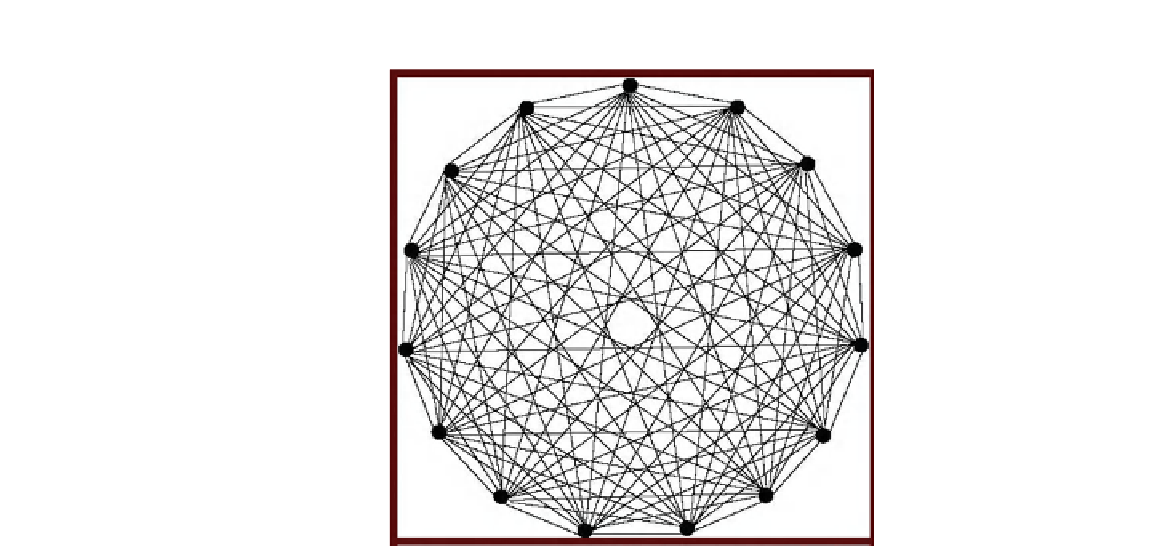Biology Reference
In-Depth Information
FIGURE 10.9
A representation of the BME polytope
B
5
B
5
is graph isomorphic to the complete
graph on 15 vertices, shown below (see Figure
10.9
).
These and many other facts about BME polytopes appear in [
27
,
23
]. For
n
=
,
|
T
5
|=
Example 10.9.
For
n
5
15, so
=
7,
7
2
[
27
] observed that in the actual polytope
B
7
⊂
R
, the graph isomorphismwith the
T
∈
T
7
for which the BME vectors are not connected by an edge of the polytope. That is, the
line joining
complete graph on
n
=
7 vertices no longer holds: there are pairs of trees
T
,
T
is not itself an edge of the polytope, but must sit somewhere
T
and
w
w
inside
B
7
is convex. See [p. 5][
27
] for a picture and description of these
pairs, and other information about faces, facets, and more for small
n
.For
n
B
7
, since
7,
computational complexity prevents the hands-on geometric methods explored in [
27
]
from being exploited for higher
n
.
Describing more fully the edges and other features of the the BME polytope could
have practical implications for phylogenetic tree reconstruction. In the language of the
well-known mathematical methods of linear optimization, the BME method becomes
a linear programming problem: using the correspondence between
T
>
∈
T
n
and
n
2
T
w
, carrying out the BME method for
D
is the same as minimizing the
linear objective
d
over the (convex) BME polytope
∈
R
B
n
. This framing of the prob-
lem motivated further theoretical studies of the BME polytope in [
23
], where a new
version of a cherry-picking algorithm, this time for the BME method, was developed



Search WWH ::

Custom Search